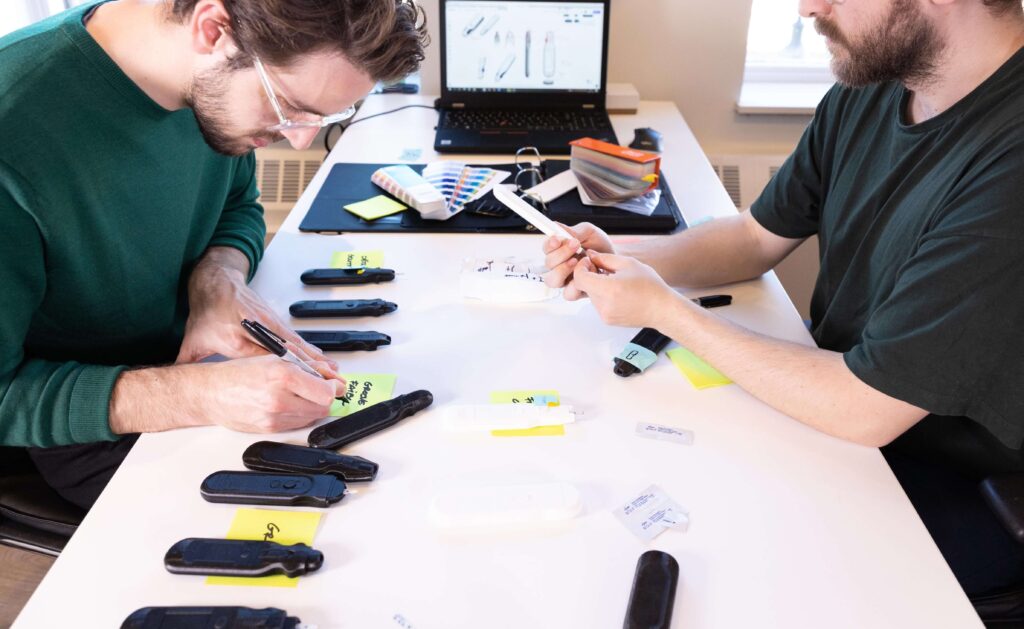In the dynamic world of medical product development, innovation and flexibility are key to success. The journey from initial idea to production-ready prototype is rarely linear. Indeed, your product may often turn out to be different from what you originally imagined.
Let’s explore the reasons for these divergences and how they can be turned into opportunities to exceed your initial expectations.
What Is a Prototype?
Prototype, noun,
Thus, a prototype serves as an experimental or initial version of a product. In product development, it’s used to test and validate concepts, designs, functionalities, and manufacturing processes before moving to production.
These preliminary stages allow for the exploration of ideas, identification of potential issues, collection of user feedback, and necessary adjustments. These steps help the product evolve, often diverging from the original concept envisioned.

Adopting Iterative Design Process
Product design is never static: it’s dynamic and constantly evolving. As they explore and learn, design and engineering teams iterate. This fluidity is crucial for adapting the product not just to technical constraints, but also to user feedback.
Adapting to Technical Constraints
Technical challenges encountered during product development are often viewed as obstacles. However, they are opportunities to drive innovation.
Technical constraints are central to product design, involving materials, manufacturing, or compliance with medical sector regulations. Far from hindering progress, they require unforeseen changes, leading to the integration of new technologies or the improvement of existing features.
Ultimately, these necessary modifications result in a final product that performs better.
Embracing User Feedback
From the early testing phases of the prototype, they can identify aspects of the product that could be improved, such as ergonomics, user interface, or specific features.
Adapting the initial prototype to meet the needs and preferences of end-users should be viewed as an opportunity to make it more suitable and appealing for the market, as well as safer for medical devices.
Keeping Production in Mind
Changes to the prototype aim not only to enhance the appearance and functionality of the final product but also to streamline the manufacturing and assembly process, and optimize production costs.
Rest assured, with CLEIO, you maintain control of your product. From the start of our collaboration, we identify areas where compromise is not an option. However, we’re here to encourage you to expand your horizons and explore all possible solutions.
The difference between your initial idea and the final prototype should not be seen as a setback. Instead, it’s evidence of the maturity of our design process.
By overcoming challenges and staying open to changes, it’s possible to create products that not only meet expectations but also surpass them.
